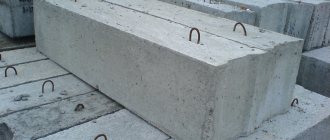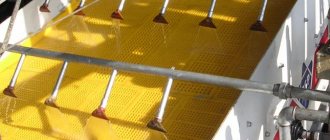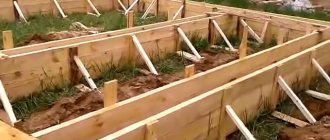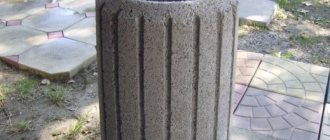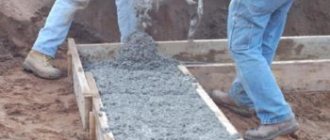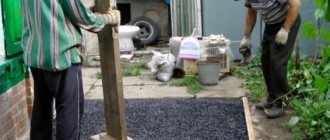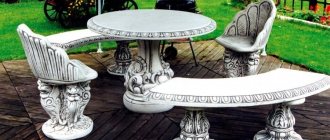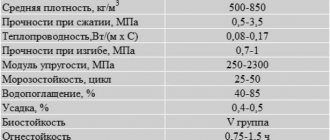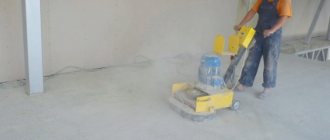Materials for sandbag houses
The main building material for sandbag houses is sawn bags or bags, which come in two types: cut and short. Short ones are ready-made bags up to 1.5 m long and 0.6 m wide, and for cut ones there are rolls with lengths from 5.0 m to 100.0 m. The best option is cut bags with a length of 92.0 cm and a width of 55, 0 cm, into which you can fill sand (or earth) up to 50 kg. It is recommended to use high-density fabric bags of 100 g and above. Such bags can easily withstand heat, cold, moisture and drought, as well as mechanical damage.
The second material is elastic galvanized barbed wire, which has a small thickness and at the same time has high strength.
The rigidity of the wire allows you to work with long sections and withstands the tensile forces created by temperature changes. And the galvanized coating of the wire protects it from corrosion for a long time.
We cannot ignore the contents of the bags, that is, sand (earth, clay), which must meet the main criterion - the absence of moisture.
You cannot do, of course, without logs for the floors and roof, as well as window and door frames. Their installation is carried out during the construction of walls to accurately adjust the walls to the openings. We must not forget about plastic pipes for air ducts, which are installed at a distance of 10.0 cm from the ground and under the junction of the wall and roof slabs. It is also necessary to provide outlets for sewerage and water supply if there is a well on the site.
Calculate the volume of sand you need for the sandbox
Calculating the amount of river sand you need for a children's sandbox is quite simple. It is enough to know the volume of your sandbox. For square
or
rectangular
sandbox, you need to multiply its
length
,
width
and
height
.
Please note that the height is not taken as the height of the sandbox itself, but the height of the bulk layer of sand, which is 2/3
of the height of the sandbox. The resulting number will be the volume of your sandbox.
Next, we calculate the amount of sand for the sandbox that will be required to fill the resulting volume of the sandbox. To do this you need to know the correct specific gravity of the material.
. In our case, it is equal to 1.5 tons per 1 cubic meter. Now we multiply the volume of the sandbox by a coefficient that is equal to 1.5. As a result, you will receive the amount of sand for the children's sandbox that you need.
For example, let’s calculate the amount of sand we need for a standard children’s sandbox 1.5x1.5 meters and 30 cm high:
First, we find out the volume of our sandbox by multiplying its Length, Width and Height. We get 1.5 x 1.5 x 0.2 = 0.45 m3
Now let’s multiply the volume of our sandbox (0.45) by a factor of 1.5 (specific gravity of sand). We get 0.45 x 1.5 = 0.675 tons, which is required to fill such a sandbox, or 675 kg.
If you order sand for a sandbox in bags
, then you need to know the number of bags needed for your sandbox. Our sand for the KROKHA sandbox is packaged in 40 kg bags, so we divide the resulting volume by 40 and round to the nearest whole number: 675:40 = 16.8, i.e. we will need 16-17 bags of 40 kg each. to fill the sandbox.
Another popular shape for a children's sandbox is the round sandbox.
.
Its volume is calculated using the formula for the volume of a cylinder: V= n
r2h, where
n
is a constant value equal to 3.14; r is the radius of the sandbox squared; h is the height of the desired layer of sand, equal, as in the previous case, to 2/3 of the height of the sandbox. We multiply the resulting volume by 1500.
For example, let’s find out how much sand is needed for a round sandbox with a radius of 50 cm and a height of 15 cm: V = 3.14 x 0.52 x 0.15 = 0.11775 m3
0.11775 x 1500 = 176.6 kg of sand, i.e. 4-5 bags of 40 kg each.
Regardless of the shape and size of the sandbox, the recommended layer depth should be at least 10-15 cm.
If you are wondering about changing or purchasing sand for a sandbox in bags in Moscow or the Moscow region, which is clean and safe for children, then our company will be happy to help you with this!
The online store offers to buy sand for the sandbox in environmentally friendly paper bags, high quality with a Certificate at competitive prices. Our company will be happy to deliver sand to you at a time convenient for you, in the required quantity, unload it, scatter it in the sandbox, and, if necessary, clean your sandbox of old sand. All you have to do is enjoy playing with clean, child-safe, certified, calcined river sand in the sandbox with your child. Although the child himself will enjoy spending time in such a sandbox, building Easter cakes and digging tunnels. And you will ensure a great mood for yourself and your child without unnecessary hassle.
Certified washed, seeded calcined sand for children's sandbox, playground and children's play area, packaged for delivery throughout Moscow, the Moscow region and the Regions to kindergartens, dachas and playgrounds.
Foundation
Some builders are of the opinion that for a house of this type a simple foundation is sufficient and does not require significant costs. If there are no problems with the soil, a trench 0.4 m - 0.5 m deep is dug, and gravel is poured into the bottom.
Fine crushed stone is poured on top of the gravel to fill the resulting voids. After compaction, the first row of bags with sand (earth, clay) is laid on the gravel.
There is another opinion, confirmed by practice. It concerns the case when it is better to play it safe once again and build a more reliable foundation. A trench is also dug to a depth of 20–40 cm, but unlike the previous option, half of the trench is filled with sand at the bottom, the second part is filled with crushed stone or broken brick for drainage. The first row is made of bags, but not just with sand, but with a mixture of sand, gravel and cement.
Walling
The construction of walls from sandbags is not particularly difficult and they are laid out quickly. Several people must participate in the process, since the weight of one bag is at least 50 kg, and if you lay out some areas from the hoses with sand, the weight increases. The bags are stacked on top of each other, but only wire needs to be laid between them to prevent them from moving relative to each other. Then the walls are covered with plaster, doors and windows are installed in frames. After which the roof is installed using a technology not much different from conventional brick or block buildings.
There are a number of opinions among construction experts regarding the laying of wire between bags. So, if the sandbag house has a rectangular shape, then the barbed wire can be replaced with wooden pegs. The only thing is that the wire needs to be laid in the corners.
50 kg bags standard
- home
- Front page
- About company
- Applications and proposals
- Product Catalog
- Promotions, discounts and sales from the Tarra Company
- Payment
- Contacts and directions
- our clients
Anti-slip sheet
- Properties of polypropylene material
- Lightweight 50 kg bags
Service information
- Printing
- Design features
- Material properties
- Subscribe to news
- Product certificates
Standard polypropylene bags for 50 kg.
Prices include taxes. If you do not find the modification, size or color of the bag you need in our price list, we are ready to manufacture it according to the required characteristics within 3-4 days. Application of your logo (1, 2, 3 colors, full color, etc.).
Characteristics and prices of standard (according to GOST) polypropylene bags for 50 kg
| Name | Color | Variety | Bag weight, g | PC. in pack | Pack weight, kg | Pack volume m³ | Price, rub* | Photo | Certificates | Description and order |
| Polypropylene bag 55×105 cm, first grade. Bag weight 80 g. | first | 80±3 | 500 | 40,2 | 0,31 | 11,00 | Certificate Declarations | |||
| Premium quality polypropylene bag 55×105 cm. Bag weight 80 g. | higher | 80±3 | 500 | 40,2 | 0,22 | 13,80 | ||||
| Premium quality polypropylene bag 55×105 cm. Bag weight 90 g. | higher | 90±3 | 500 | 42,5 | 0,22 | 14,40 |
* — The price is indicated for batches of 40,000 pieces. To clarify the price for other volumes, download our full price list or contact the operators.
Polypropylene bags for 50 kg according to GOST - differences and advantages
We offer high-quality polypropylene bags of 50 kg that meet the requirements of GOST. Standard bags differ from lightweight bags due to their high-density weave. The denser the bag, the stronger it is and the higher its weight.
A standard 50 kg polypropylene bag is suitable for packaging flour, grain, feed, crumb rubber, gravel and much more...
Polypropylene bags made according to GOST weigh between 80-120 grams. 50 kg bags are most often made of premium grade polypropylene and are suitable for food and non-food products. They are intended for: sugar, cereals, pasta, salt, animal feed, construction mixtures, expanded clay, various insulation materials, fertilizers, chemical bulk substances and much more.
The most popular color of standard bags is white, but no one limits you in your choice of colors. On request we can produce red, blue, yellow and any other colors. Products come in different sizes, too. Standard bag sizes do not always fit the dimensions of the product itself. To order, we will produce bags with the required characteristics that will meet all GOST requirements.
We apply a logo and other markings to the finished bags. The dense weave of the material (almost smooth surface) allows printing to be applied evenly. The logo looks neat and bright.
Our exclusive are transparent bags , which are made of the highest grade material and are suitable for food products. Ready-made samples are always available in stock.
Thanks to the anti-slip thread, bags stacked on top of each other are held securely under their own weight...
50 kg polypropylene bags are the most popular size. Many manufacturers pack their products in 50 kg packs because of the convenient multiplicity. That is, you do not need special means to convert the required volume of production into the number of bags; this is easy to do in your head. Hence the popularity of this size.
The range of main consumers of 50 kg bags is very wide. It is perfect for packaging flour, grain, seeds, feed, crumb rubber, gravel, mineral materials, packaging small and heavy finished products, and so on. The methods for packaging the product into a bag are also different: either pouring the product through an open top or through a special valve.
With such a wide variety of applications, bags must satisfy them all. In order to standardize the bag for all types of activities, GOST R52564-2006 was developed, which includes requirements for the bag for various parameters. Such as load capacity, resistance to external influences, breaking load, weaving density and so on. During production, taking into account all the requirements of GOST, the weight of such a bag is at least 80 grams. There is also a bag weighing 90 grams, which is mainly used by flour manufacturers to play it safe and worry about the safety of their product.
We deliver throughout Russia by any transport company, as well as by rail...
Polypropylene bags are environmentally friendly, non-toxic, non-corrosive, and abrasion resistant. For ease of transportation, anti-slip thread is woven into the bags, thanks to which bags stacked on top of each other do not slip or fall apart. Therefore, when palletizing bags, it is not necessary to use stretch film. Bags with anti-slip threads are held securely under their own weight.
10,000 bags (20 packages of 500 pieces) are stacked on one pallet. 4000 bags (8 packs) will fit into a passenger car. Gazelle - 18,000 pieces (36 packs). A truck contains 180,000 bags (360 packages). There are 235,000 pieces per car (470 packages).
The cost of 50 kg bags varies from 7.95 to 10 rubles.
Delivery in Moscow - from 350 rubles per m3. We deliver throughout Russia by any transport company, as well as by rail.
| Terms of payment | Delivery terms | Guarantees | Returns and exchanges |
| Product reviews | Back call | Promotions and discounts | Certificates |
| Knowledge Library | Company employees | Photo and video |
See also: 451427201
Lightweight 50 kg bags,
Advantages and disadvantages
Pros:
- The houses are exceptionally environmentally friendly.
- Construction costs are minimal. A small house can cost as little as $1,000.
- Speed and ease of construction.
- Adaptation of walls to soil shrinkage.
- High seismic resistance.
- Wide possibilities for various kinds of design solutions.
Minuses
- The durability of domed buildings depends on the humidity of the climate.
Before the invention of the original technology for soil construction, sandbags were used quite actively. Dams on rivers held back the flow of spring waters, and parapets over the trenches protected soldiers from enemy bullets. Today, from the sphere of emergencies and military conflicts, bags filled with soil have safely moved to the field of eco-buildings.
The key material that made the earthbag house a reality is polypropylene. Modern burlap is woven from it.
Regular hemp, used for centuries to make bags, rots in the open air. For this reason, it is not suitable for the construction of external walls.
Anyone who first learned about “bag” construction may regard this news as a joke. In fact, we are talking about completely viable structures that have a number of advantages:
- Impeccable environmental friendliness.
- Minimum cost.
- Ease of construction.
- Resistance to precipitation and soil deformation.
- Unique seismic resistance.
- Variety of shapes and architectural solutions.
Now let's take a closer look at the features of building dirt houses.
How to build a house from bags of earth and sand?
Already at the initial stage, the differences between traditional and soil wall construction technologies are visible. They dig a deep foundation under a stone building, reinforce it and fill it with concrete. It is enough to dig a shallow trench (0.5-0.7 meters) under a dirt house and fill it with large crushed stone without mortar. Fine gravel or screenings are poured over the top of the crushed stone, filling the voids between the stones.
No concrete, only large and small crushed stone
As we have already said, frost heaving and soil subsidence are not a problem for such a building. Sandbags are a flexible wall material. It rises and falls with the ground without cracks or destruction.
Before laying it into the wall, the bag of soil or sand is thoroughly compacted, making it wide and flat. Thanks to this operation, the wall masonry becomes stable and durable.
The only weak point of a house made of sandbags is the weak adhesion of the rows to each other. It is eliminated by laying barbed wire between the layers of bags, which reliably fixes the “soft bricks.” In the photo we see the beginning of the construction of a round house made of bags of earth. This form has its advantages. The main ones are high strength and the possibility of domed masonry.
Barbed wire ties rows of bags together
Gradually narrowing the ring of bags, the builders erect a dome
House made of dome-shaped bags - reliable and beautiful
The only limitation for such buildings is the humid climate. The dome structure made of bags gets wet quickly. But in dry areas its service life is calculated in centuries.
Let's say right away that folding a dome from short bags is very problematic. Therefore, in practice, a long “sleeve” made of polypropylene is used for this work. Ring walls are also made from it.
A polypropylene sleeve replaces a good dozen bags
Filling a polypropylene sleeve with soil is not an easy task. The technology that facilitates this process was borrowed from sausage makers. The shell of the bag is collected with an accordion, a bucket without a bottom is inserted into the neck and soil is filled “from tail to head”.
Construction of houses from bags gives complete freedom of choice of architectural form. In addition to domes and buildings with round walls, traditional rectangular “boxes” can be erected from them.
Wooden beams and a hip roof will rest on the round walls.
Classic earthbag building box
Driving nails and screws into sandbags is a futile task. Therefore, when building walls, builders place wooden blocks between the bags. Window and door frames are attached to them.
New innovations in soil-bag technology include the abandonment of the use of barbed wire. It is replaced by a special method of tying layers of masonry. By laying a polypropylene sleeve using this method, you can do without barbed wire.
Types of bags for construction waste
Construction waste bags and sacks can be used to collect and transport household waste, scrap brick and concrete, bulk food and plastic granules, fallen leaves and weed clippings. In the sports field, large construction waste bags are used to transport snow during the preparation of ski slopes.
Household containers are made from the following types of material:
- Low-pressure polyethylene. It belongs to the budget category of goods, as it has low density and load restrictions. Can be used for packaging garden and medical waste, rags and other light items.
- Medium pressure polyethylene. A more durable polymer designed for high loads. Can be used to store heavy items that do not have sharp corners or edges.
- High pressure polyethylene. LDPE bags are characterized by high strength and elasticity, and do not lose their properties when in contact with acids, alkalis and solvents. It is almost impossible to pierce the walls of the container with a sharp object. Used to collect glass, scrap iron, brick and concrete.
- Polypropylene. The polymer fabric is cut into thin strips, which are woven into textiles. Blanks for containers are cut out of it. Woven bags can withstand heavy loads and are used in the construction and repair industries.
Note! Garbage bags, which are sold on rolls, are intended exclusively for collecting light household waste with a total weight of up to 5 kg. The bags tear easily under load and from sharp objects.
The bottom of the bags can be stitched with a strong thread or separated into a separate plane, reinforced with a second layer of material. In working condition, such containers look like a large bucket and are characterized by good stability and reliability.
The upper edges of the bags, depending on their cost and purpose, are either a straight thermal cut or a stitched strip to increase strength. In order to seal out odors and prevent the occurrence of toxic fumes, some models are equipped with ties. Green polypropylene garbage bags, designed for storing and transporting heavy loads, are made with handles and loops.
You can determine the purpose of products by their color. Green garbage bags are made of polyethylene. Their scope of application is determined by the type of material and its thickness. Black bags are made of polypropylene and are durable, reliable and versatile. They can be used in all spheres of life, including for storing waste of hazard classes 1-3.
The inner surface of the container can be regular or laminated. The first option has good ventilation qualities that prevent the formation of fungus and mold. The second option is designed for collecting objects with sharp edges - iron, glass, broken stone and concrete. To store materials that need to be protected from moisture, garden waste bags with an inner cellophane liner are available.
Manufacturers produce polymer products with the following technical characteristics:
- Size - 50×90, 55×105, 70×115, 80×120 cm.
- Volume - 60, 80, 120, 180, 240 l.
- Wall thickness - 30, 40, 50, 60 microns.
- Load capacity - 50, 60, 75, 100, 120, 150, 200, 500 kg.
Important! Modern technologies make it possible to produce bags of any size, strength and configuration according to the customer’s design.
How suitable is a house made from earthbags?
The building, built from earthen “bag bricks”, is suitable for permanent residence. Dry compacted soil has the same thermal insulating properties as clay bricks.
The load-bearing capacity of walls made of soil packed in bags is sufficient for a one-story building. We did not find information about emergency situations with houses built using the Earthbag technology.
The skillfully executed interiors of such buildings attract attention with their smooth lines and laconic forms.
Reviews of residential houses made from bags are mostly positive. A dirt house does not freeze in severe frosts and remains cool during the hot season. Another thing is that not every owner of a plot of land will want to acquire such an unusual building for permanent residence. But a home craftsman will not refuse to try his hand at constructing an outbuilding from sacks.
Summer kitchen of their earthbags under a turf roof
A summer kitchen, a bathhouse, a garage, a barn, an above-ground cellar or a chicken coop - there are many options for testing soil technology.
A shed made of sandbags - the cost is symbolic, the benefits are practical
To protect polypropylene fiber from solar ultraviolet radiation, the walls of the outbuildings are coated with clay.
Room for a mini-bath or above-ground cellar under construction
Recommendations for self-building
As we have already said, a building made of bags of earth is erected without a foundation. It is replaced by a shallow trench filled with a compacted mixture of large and small crushed stone. The width of the trench should be 10-15 cm greater than the width of the bag, and its depth should be 50-70 cm.
The first time it is better to build a house from bags with round walls. It is stable and easy to lay.
After filling the earth, the neck of the bag is wrapped in 3 layers and stitched with wire. After this, the “earth brick” is compacted. When laying the first row of bags, place the door frames. If there is a threshold at the entrance to the house, then the doors are placed on the second or third masonry belt.
Each row of “earth bricks” is laid with two rows of barbed wire. It is fixed to the bags with homemade staples made of nails.
Having reached the window level, window frames are installed. Support circles are placed on them and covered, together with the door frames, with arches made of bags.
In dry and hot climates, you can opt for a flat roof option. To do this, floor beams are mounted along the top of the walls and OSB boards are attached to them.
After this, a waterproofing carpet is laid and the walls are plastered (with a clay-sand mixture over a mesh).
In our area, where rain is a common occurrence, a building made from bags of earth needs a hip roof. Its calculation consists of selecting the length of the support beams laid out along the wall.
An important point is attaching the beams to the walls made of bags. They can be secured with ropes by skipping their lower rows of masonry. The upper ends are tied to support beams. Such connections will prevent strong winds from tearing off the hip roof.
Video on the topic:
Drainage and Foundation
Foundations, both stone and concrete, have their disadvantages, mentioned above. Until now, foundations have received less attention from natural materials builders than walls, but opportunities for exploration and experimentation are now ripe. Two advanced types of foundation that are not “natural,” although they appear suitable for adobe in some circumstances, include compacted tires and earthbags.
Compacted tires.
In recent years, there has been a lot of experimentation with the use of tires as a building material. New Mexico architect Michel Reynolds developed a style called "Earthship," which uses tires filled with earth for most of the exterior walls. They are usually sunken and filled with soil, making them most suitable for dry climates.
| Densely compacted tires filled with soil. The stakes serve as anchors for the adobe wall. |
For the adobe foundation, only two or three tiers of tires are made, stacked on top of a moat with masonry or isolated along the bottom with some waterproof material to prevent capillary filling of the tires with water. The tires are laid so that they touch each other, then each is driven in with slightly damp earth using a hammer. The average car tire holds about 135 kg of soil. The second tier, laid in a “spoon dressing” like bricks, should correspond to the lower
No tier in shape. Foundations made from padded tires are stable and durable. They are considered to be seismically resistant because they can move slightly during earthquakes and will return to their original state.
Unfortunately, tire foundations have as many disadvantages as they do advantages. The first is the extremely hard work of filling the tires. A strong person can fill one tire in about an hour of constant tamping, but most of us get tired and frustrated after filling a single tire. The tires are too wide for load-bearing walls, which can make it difficult to gracefully design the extra width. Their size and shape limit your ability to control the shape and configuration of the entire structure. Additionally, clay materials such as adobe and plaster may be difficult to adhere to rubber. Many people are concerned about the health effects of possible emissions from tire rubber.
Bags of earth.
Bags filled with earth have more advantages over tires and are less problematic. Many different types of bags can be used for this purpose, from fiber coffee bags to woven polypropylene bags. Latest
| The foundation is made of bags of earth or sand. |
Can be found on sale, quite cheap. Nader Khalili, who researched this technology at the California Institute of Earth Art and Architecture (Ca1-Ear1I), buys rolls of tubular film. Using sleeves up to 9 m long, he builds domes and vaults from bags of earth that are resistant to rain, floods and earthquakes. Because the bags can be filled with anything from sand to gravel
Up to heavy clay soil, this is a versatile and inexpensive technology.
Using short or long bags, fill them in place with slightly damp soil, then sew the closed ends together with nails or simply fit them tightly together so they don't open. As each tier is completed, tamp it down with your feet and then compact it on top with a heavy tamper. This process is much easier than tamping tires. For added earthquake resistance, place continuous strands of barbed wire between each tier of bags. This not only prevents the bags from slipping, but also increases tensile strength along the entire base, helping to support the structure as a whole.
The disadvantages of this system mostly relate to durability. Fiber bags, although non-toxic and made entirely from renewable materials, degrade when wet. Polypropylene bags, although they do not rot, quickly deteriorate from ultraviolet light. Fortunately, polypropylene is a relatively pure plastic and breaks down into harmless components. By protecting the bags with "sunscreen" mud immediately after installation, and then covering them with earthen or lime plaster, decomposition can be prevented.
Another concern is the possibility of moisture migrating through the bag fabric and either causing the clay soil to expand and move, or seeping upward to saturate the adobe base.
In rainy northwestern California, where earthbags are popular for their earthquake resistance, I adapted the following approach. First I build a moat with masonry that drains well. On top of the filled ditch, I place one or preferably two tiers of bags filled with gravel (round drainage stones 3 cm or smaller, although crushed rock stones will also work), creating an above-ground extension of the foot of the ditch with masonry. If more height is needed, add additional tiers of soil-filled bags. To improve the adhesion between the slippery bags and the adobe, thick wooden pegs are driven into the top tier. Although we admire the cheapness, speed and lightness of such foundations, their durability and water resistance remain unproven.
Each of these types of foundation, under certain circumstances, have serious disadvantages. We have not yet found a durable, non-toxic, earthquake-resistant foundation that can be easily made from locally available materials. This problem can be solved by adapting active and rigorous research efforts, testing new systems and new combinations of materials, in the hope of developing a foundation as strong and harmless as stone, as earthquake-resistant as reinforced concrete and as light as bags of earth. Another option is to do like our ancestors throughout the planet, forget about a permanent place for a home, allowing the destruction of housing, gracefully returning to the earth every couple of generations, without leaving any ugly and toxic debris.
In people's lives, the question often arises: what is preferable - buying a new apartment or building your own house? And those of them who decide on such a heroic act are faced with...
The foundation for a house is the most important thing; it is the support and foundation for the entire structure, an indicator of the possible number of storeys, an assistant in case of vibrations and loads on the walls. Laying a foundation is a very labor-intensive process and...
Foundation reinforcement To ensure that a concrete structure is strong enough, concrete reinforcement is used today. For foundations, a large reinforced frame is usually installed, which strengthens the foundation of the house and makes it more stable, durable and durable. ...
Characteristics of bags
All polymer containers are certified according to the requirements of the State Epidemiological Surveillance of the Russian Federation. Repeated use and low price make packaging one of the most popular products. Technical characteristics depend on the raw materials used in production.
Table No. 1 Technical characteristics
| Bag strength | Number of threads per 10 cm | Bag density | Tensile load | Threads | Number of stitches per 10 cm seam |
| Ordinary | 28-30 | From 45 to 90 g/m2 | 680H | polyamide | 8-10 |
| Increased | 31-33 | From 45 to 110 g/m2 | 830H | polypropylene | 10 |
There are 1st and 2nd grade packaging. For construction waste, grade 2, white or green, is used.
Dimensions and maximum load
The maximum load and weight of the permitted cargo depend on the strength, size, and fabric of the packaging.
Table No. 2 Dimensions and load of bags
| Load in kg | Bag sizes in cm |
| 5 | 30x45 |
| 10 | 40x55 |
| 25 | 45x75; 50x80 |
| 30-40 | 50x90; 55x95 |
| 50 | 56x96; 55x105 |
| 60 | 70x120 |
| 70 | 80x120 |
| From 70 to 100 | 100x120; 120x160; 150x200 |
Depending on the size, they are designed for a certain weight, which is very convenient when using them.
Material for construction bags
Polymer packaging is made from two types of polypropylene. In the production of white bags, primary processed material is used. Green or gray are the result of plastic recycling. More durable containers are made of new material.
The density of the packaging fabric is much higher than that of paper, linen or other containers. Products may have polyethylene liners, which increase strength and protect the contents from moisture.
The strength of the material makes it possible to use bags filled with earth to build a small house.
Manufacturer country
The packaging is produced in Korea and China. One of the large producers of woven polymer bags for construction waste is Russia.
You can purchase ready-made standard products from the manufacturer or order them according to the required sizes.
A member of our forum built a habitable house for a thousand dollars.
Clean indoor air, ability to withstand fire and earthquakes, durability, the ability to build it yourself. Clay and earth houses attract summer residents not only for this reason. The main advantage of such buildings is their incredible low cost.
Guest house
Forum member boo50 went on an experiment, deciding to build a house out of bags of earth. Thus, he wanted to demonstrate that own housing is available to everyone. And this will not require either solid capital, powerful equipment, or the destruction of forests. According to the summer resident, using this technology, you can build a house for 35 thousand rubles . All that is needed for this is land, two KAMAZ trucks with sand and clay, some wood and glass, pipes and a cast-iron stove for heating the home.
The technology of building from bags filled with earth was originally developed for the construction of bases on the Moon and other planets. By using local soil and supplying lightweight formwork, construction would be simpler and cheaper. Egg-shaped structures were considered more durable.
The two-story earthbag house was built by four people in about two months. The diameter of the structure at the base is 4 m, the average thickness of the walls is 65 cm. Approximate weight is 100 tons.
Foundation for a house made of bags
Work began with preparing the site for the foundation. To do this, they removed 15 cm of fertile soil layer (then there were solid stones). Then they dug a ditch with an internal diameter of 4 m and a depth of half a meter. Its base was leveled. We started laying out the bags (suitable in rolls, which are used for sugar and flour).
The bags will turn into dust over time. They are a kind of temporary formwork.
The mixture for bags consists of sand, gravel no larger than a chicken egg and clay. She acts as a connector. The components are mixed and moistened with water. The optimal percentage of clay content is 20-40%, depending on its quality.
Find the right amount of clay by testing the mixture. Make a few test batches in a small formwork and let them dry. Use a mixture that will not crack.
To hold the rows together, barbed wire was placed between them. Each layer of earthen bags was carefully compacted, thereby turning the mixture into a dense mass. When it dried, it became hard as stone. For tamping, we used a piece of timber 40-50 cm long, on which, for convenience, two handles were made.
The rows were laid in a circle, narrowing at the top like a pyramid.
As the walls were built, window openings were made into them, into which temporary forms were inserted under the windows. The forum member notes that installing windows in such a house is a pleasure: they knocked together the openings, put in slightly larger glass and simply walled them in with adobe. The windows on the north side were put in place first. They perform more of a decorative function. The windows on the second floor – the bedroom – were installed in the same way.
Forum members do not recommend installing round windows. They cost much more than regular ones. In addition, replacing them if damaged is not so easy.
Finally, the house was covered with adobe. He gave the building solidity and reliability. The house was coated with this material in a layer at least 15 cm thick. Then a doorway was installed. To fix it in adobe, old nails were first hammered into it. boo50 decided to use the experimental building as a guest house.
To better warm up the rooms, boo50 advises making large windows on the south side and additionally insulating the house with north-facing straw bales.
Earth house with traditional roof
Another forum member, krajken, used the same technology to build a house. The building was also made round, with a conical roof. The internal diameter of the building is just over 8 m. The foundation was made of rubble stone with gravel. A sand and gravel mixture with the addition of cement was poured into the first two rows of bags. In the remaining 23 rows, sand and soil were used in a ratio of 20x80. The humidity of the mixture is 10-20%. The walls were plastered using a grid.
1,200 sacks and a kilometer of barbed wire were spent on the construction of one wall. The sand used was imported from a local sand quarry. The earth was partially taken from the trench for the foundation and drainage, the remaining 15 cubic meters were dug nearby. To prevent seed germination, soil was taken from a depth of 20 cm, below the turf layer.
Since this was the owners’ first experience, the roof was made standard. Its cost was 70% of the cost of the house. However, a dome with a diameter of 8 meters and the same height would be difficult to construct from bags for two or three workers. Afterwards, the outside of the house was plastered with a cement-sand mixture.
This technology already has many supporters and opponents on the forum. But the majority of their comments agree that such a house will last for many years, and it is worth trying to work with such material. Even if someone is afraid to live in a house made of sacks, the idea for an inexpensive summer bathhouse near Moscow is very attractive.
Forum members advise trying this technology on small buildings, chicken coops or rabbit hutches.
Based on materials from participants of the “House and Dacha” forum
Specific gravity of construction sand
| View | Bulk density, kg/cu.m. m |
| Construction wet compacted | 2540 |
| Construction wet | 1920 |
| Construction rammed | 1680 |
| Building | 1500 |
| Construction loose | 1440 |
| Quartz | 1650 |
| River | 1630 |
| Mountain | 1580 |
| Career | 1500 |
| Ovrazhny | 1400 |
Specific gravity is the ratio of the weight of a material to the volume it occupies. This parameter is necessary at any construction site, since it allows you to select a dump truck for transportation, taking into account its load capacity and body volume. At the same time, it is hygroscopic (absorbs moisture), so its mass changes with increasing air humidity. Bulk material is subject to compaction and loosening under the influence of external factors, which leads to a change in bulk density - the mass of 1 cubic meter. m of sand, taking into account the voids between the particles.
